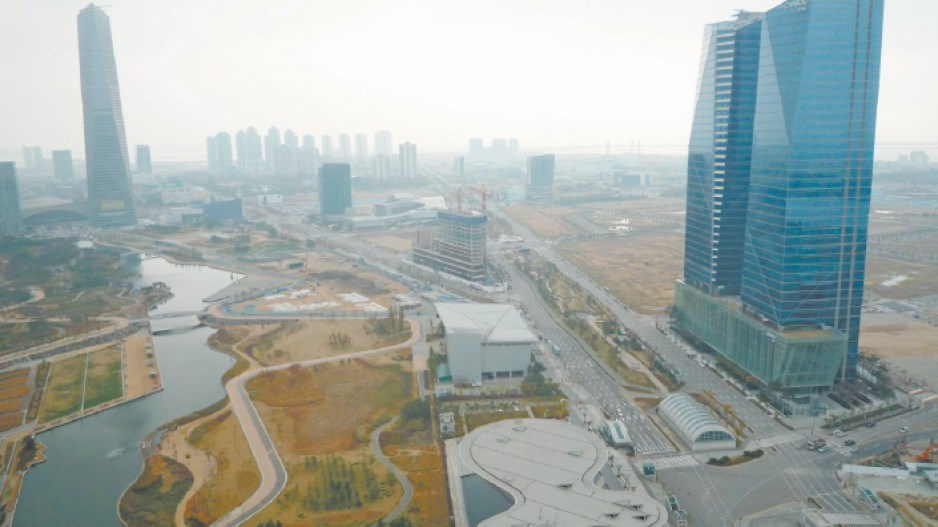If there's a way to do your daily tasks with technology, no matter how complex or mundane, you can be sure it's already under development in South Korea.
From smartphones with flexible, foldable screens to smart refrigerators where you can view the inside contents while shopping; or smart communities, where even your child's wanderings can be tracked through a central operations centre, Korean companies are on the cutting edge of technology. Each is vying to be the first to develop the Next Big Thing.
Companies here are in a race to be first. Samsung and LG are openly engaged in a battle to develop the breakthroughs needed to lower the cost of a thin-screen television technology called organic light-emitting diode. OLED delivers a higher-quality image but is currently too expensive for most consumers.
And elsewhere, other companies are figuring out how to apply these new technologies.
"We are constantly thinking up more ideas," said Steve Kim, demonstration engineer at Cisco Systems' Global Centre of Excellence, a smart-office demonstration centre in South Korea's Incheon Free Economic Zone. Incheon is a planned city about an hour's commute from Seoul being built to attract global businesses. Residents and workers live in an information-oriented world.
"We are the incubation centre," said Kim.
Cisco's core business revolves around networking systems, but at Incheon, staff are developing new ways of delivering services to business and residential communities. A young, tech-savvy population eager to try out new smart systems provides the perfect testing ground.
Cisco demonstrated its emerging technologies October 29 to foreign journalists on a tour of high-tech Korea arranged by the Korea Trade-Investment Promotion Association. There's a video concierge service for office towers, where clients can interact with a real person through a virtual concierge centre that could be located in any of the towers.
Or, if you came by car and parked in a covered garage somewhere, street-level smart kiosks can keep an eye on your car and locate your exact parking spot. You need never get lost in a mall parking garage again. The kiosks are to be operated by the city through an arrangement with Cisco.
There are also plans to have Incheon apartments equipped with direct communication to medical clinics, so residents can have their vital signs monitored from home. But there are glitches to be worked out: at one point Kim turned on a demonstration system and two people on the other end were talking together, their backs to the camera. They were unaware that 20 journalists were viewing them. On the issue of privacy, Kim later explained that people need to provide only personal information and access that they feel comfortable giving.
All of these services will be affordable, Kim said. The reason? Each one can also be an advertising platform, a new way to connect people to the brand names that Cisco expects will want to buy advertising space. Many of the systems are expected to be ready before the end of 2014.
Korea's most advanced high-tech business hub, however, is an hour east of Incheon, at Pangyo Techno Valley, where the government made land available to attract international companies.
U.S. conglomerate GE is one of the companies to have established a research and development facility there, employing 260 people. GE is developing everything from proprietary energy solutions to smart home appliances. There, microwave ovens and smart refrigerators have Wi-Fi-enabled features. You can connect with your fridge while shopping.
Staff subject them to "extreme testing," said GE spokesman Jae Young Jang. "They can all be activated by smartphone."
In one office, a staff of about a dozen young software engineers worked diligently at developing new Wi-Fi applications for home appliances. In the adjacent room was the object of their research: an apparently new fridge sporting enough dents and smudge marks to identify it as a well-tested prototype.
"Here we are trying to focus on new technologies, new trends, then practise on the prototypes to deliver the product to the U.S. and other markets around the world," said Jang. •




